25km Heaths and Parks
Wimbledon Common
A glorious blast of fresh air and wide open spaces on the commons of South-West London
Ride overview
Once, much of what we now call London was open heathland where cattle were grazed. London’s best example of this increasingly rare and threatened habitat are the Heaths of Putney and Wimbledon, where Londoners escape from the claustrophobia of the city to walk, run, ride their bikes and horses, and play golf. This route using only the permitted cycle paths across the Commons is a beautiful journey at any time of year, but is perhaps at its most beguiling in autumn. Along the way, are two superb gardens, woods, wild deer and there are many stops for food and beer. The route being almost entirely traffic-free, is suitable for a family day out.
Ride reviewed; November 22, ridden as part of the Guided Ride Series July 2024


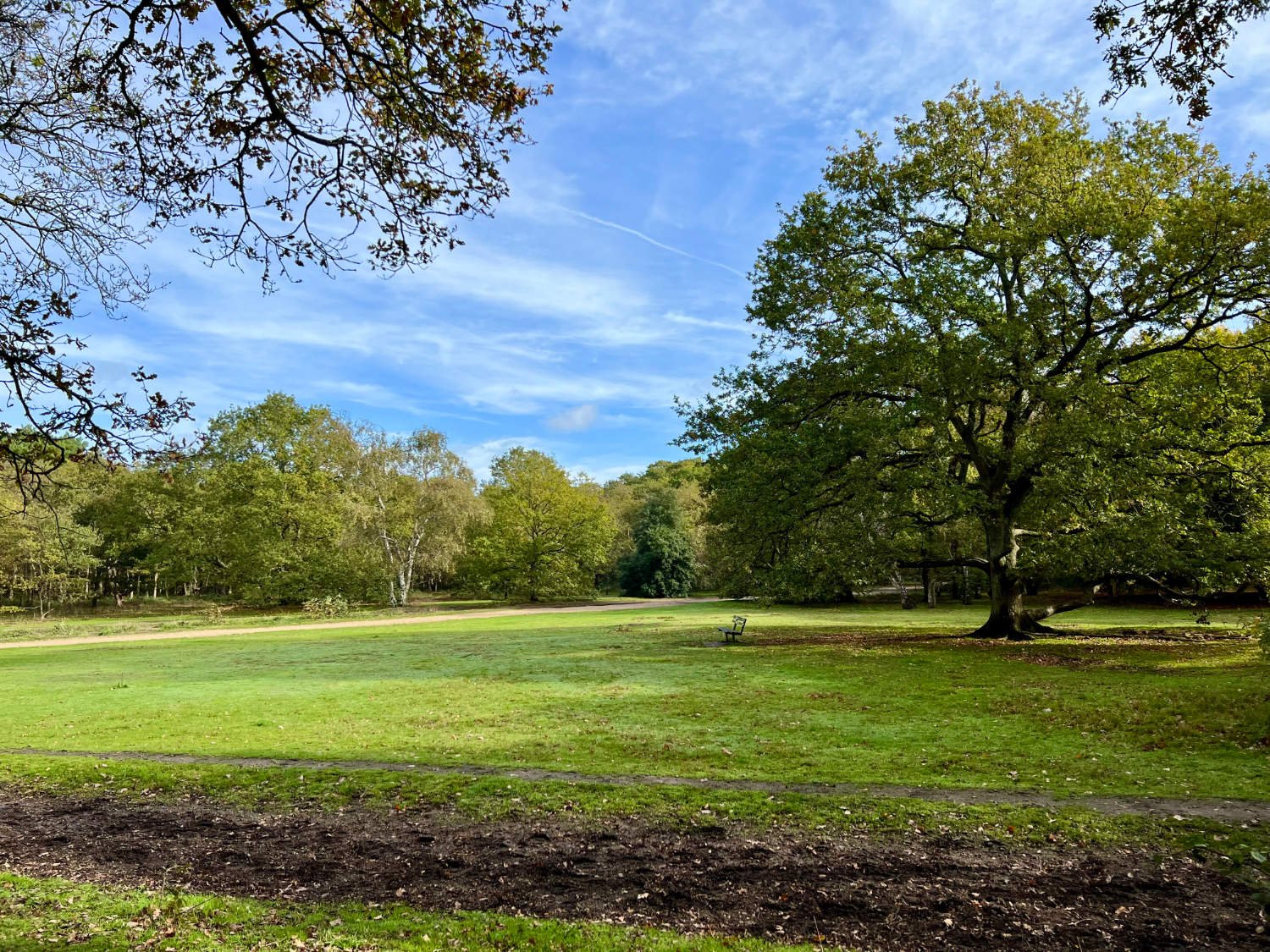
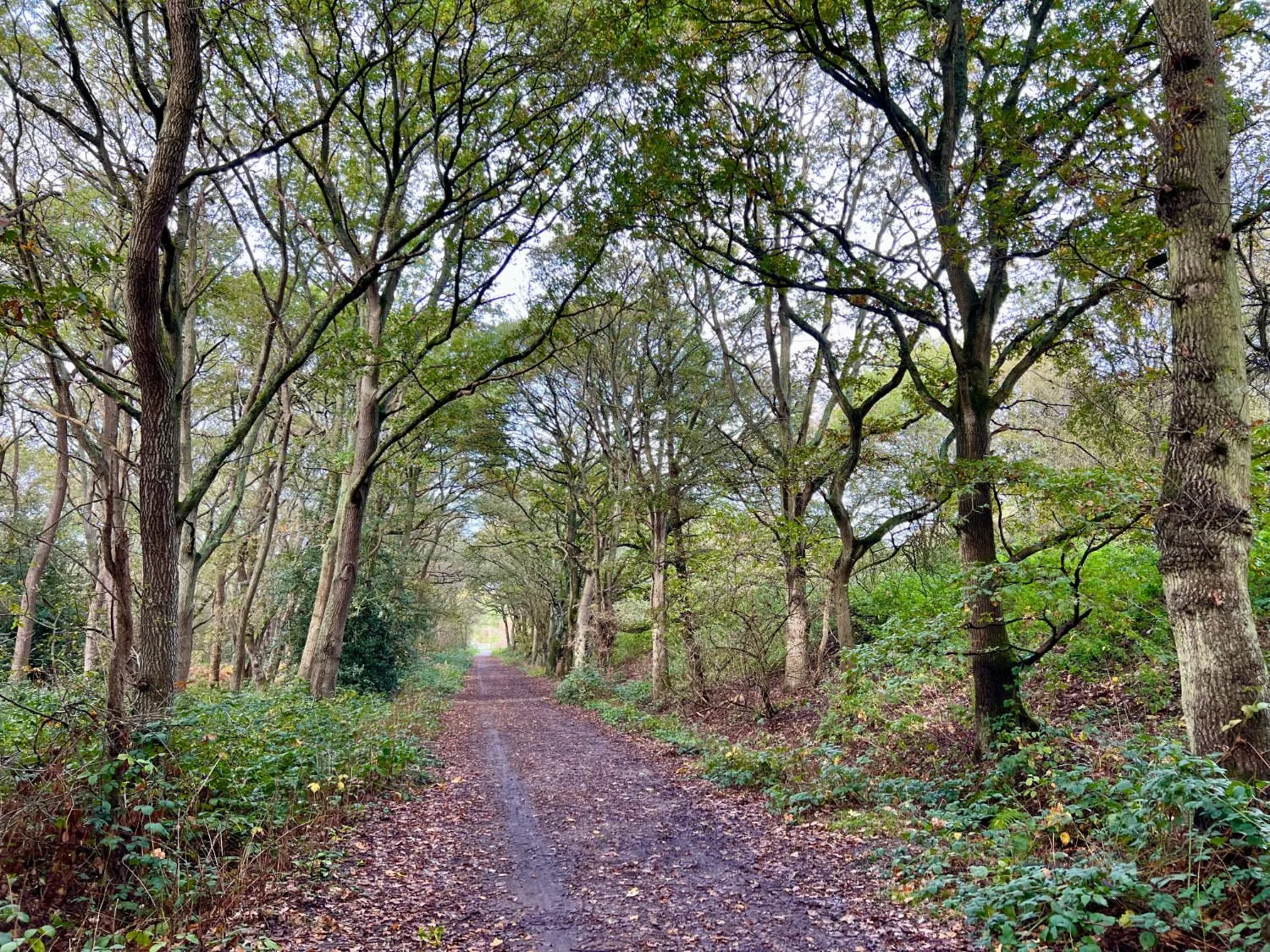





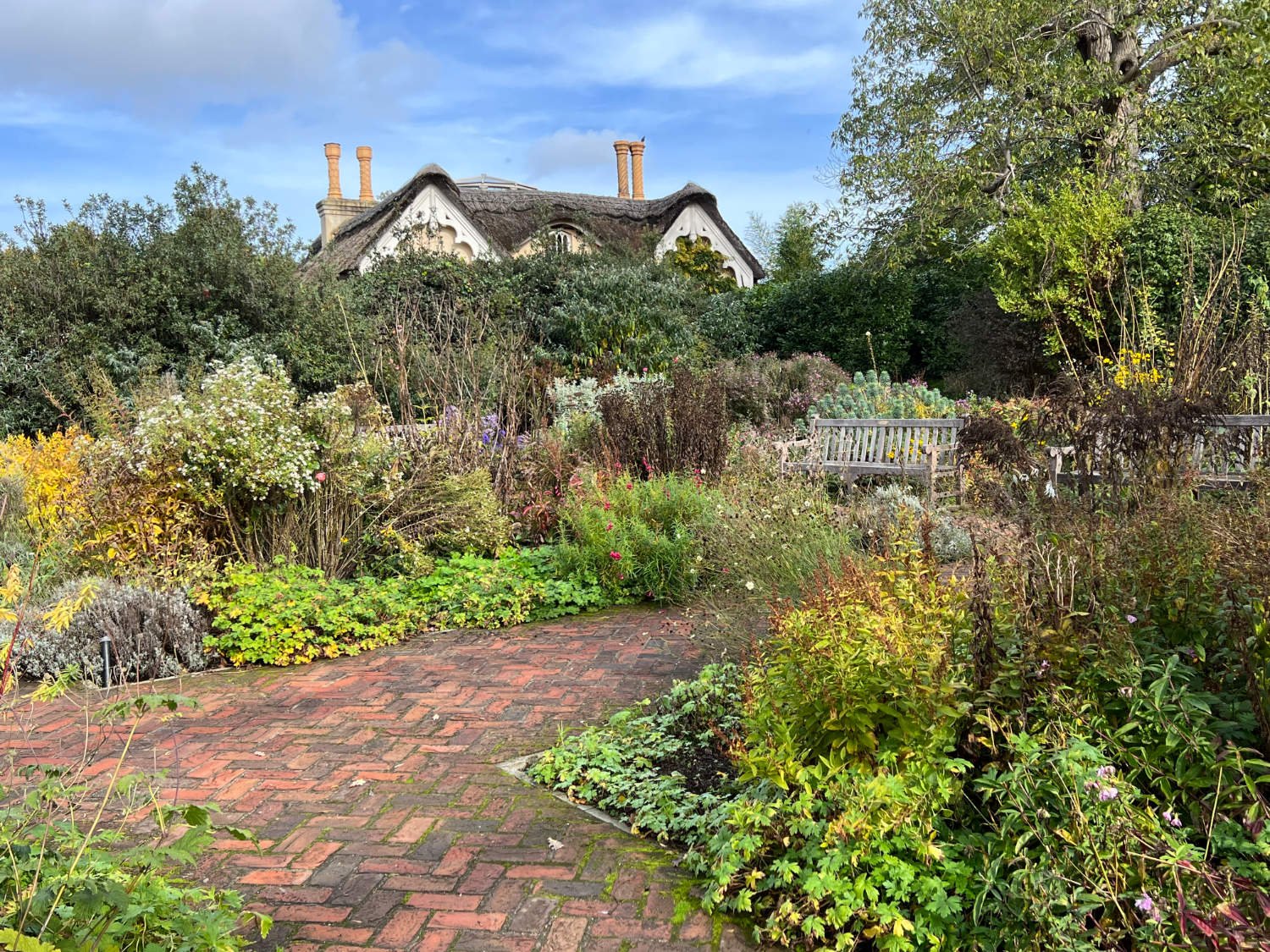
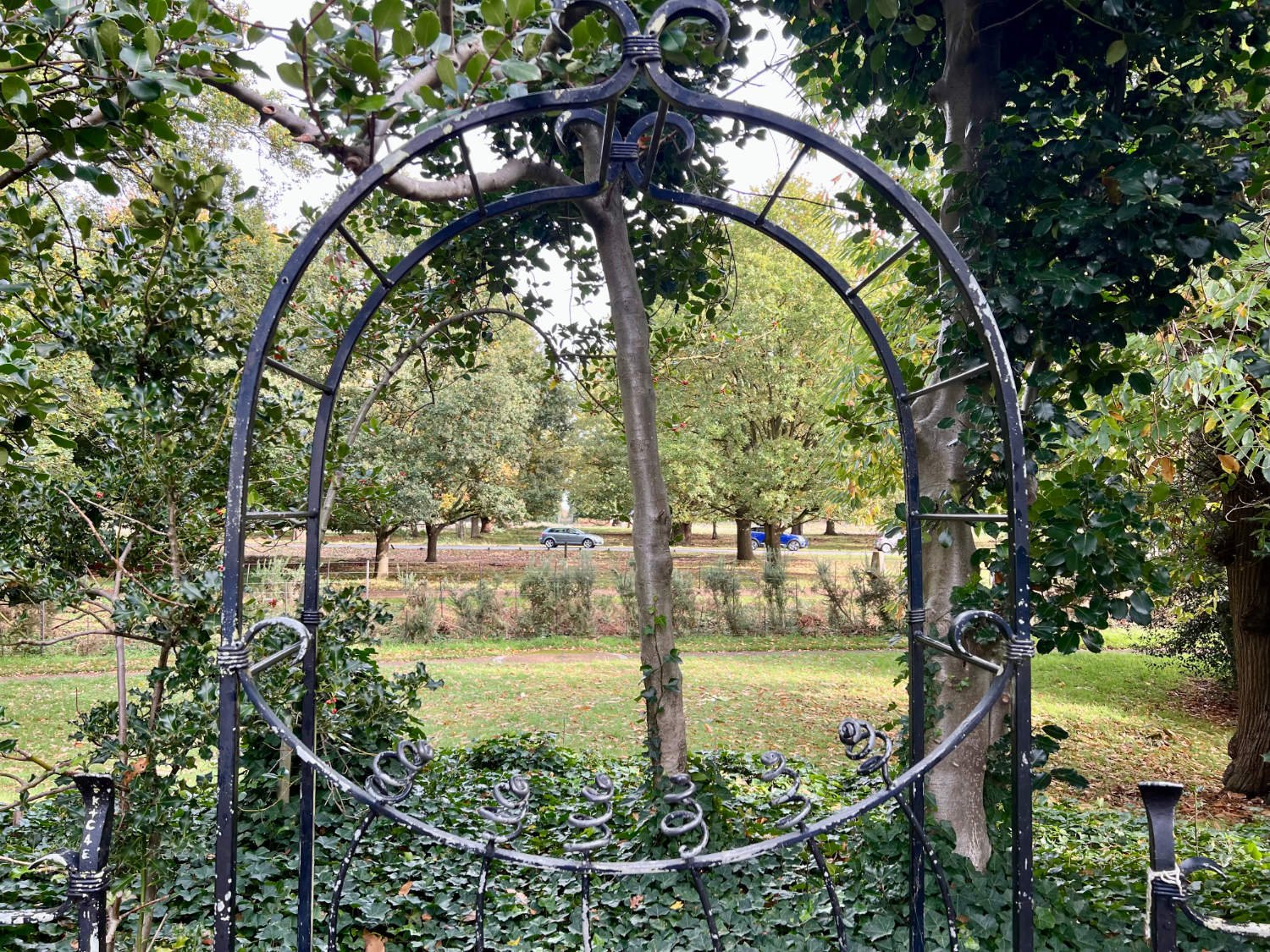



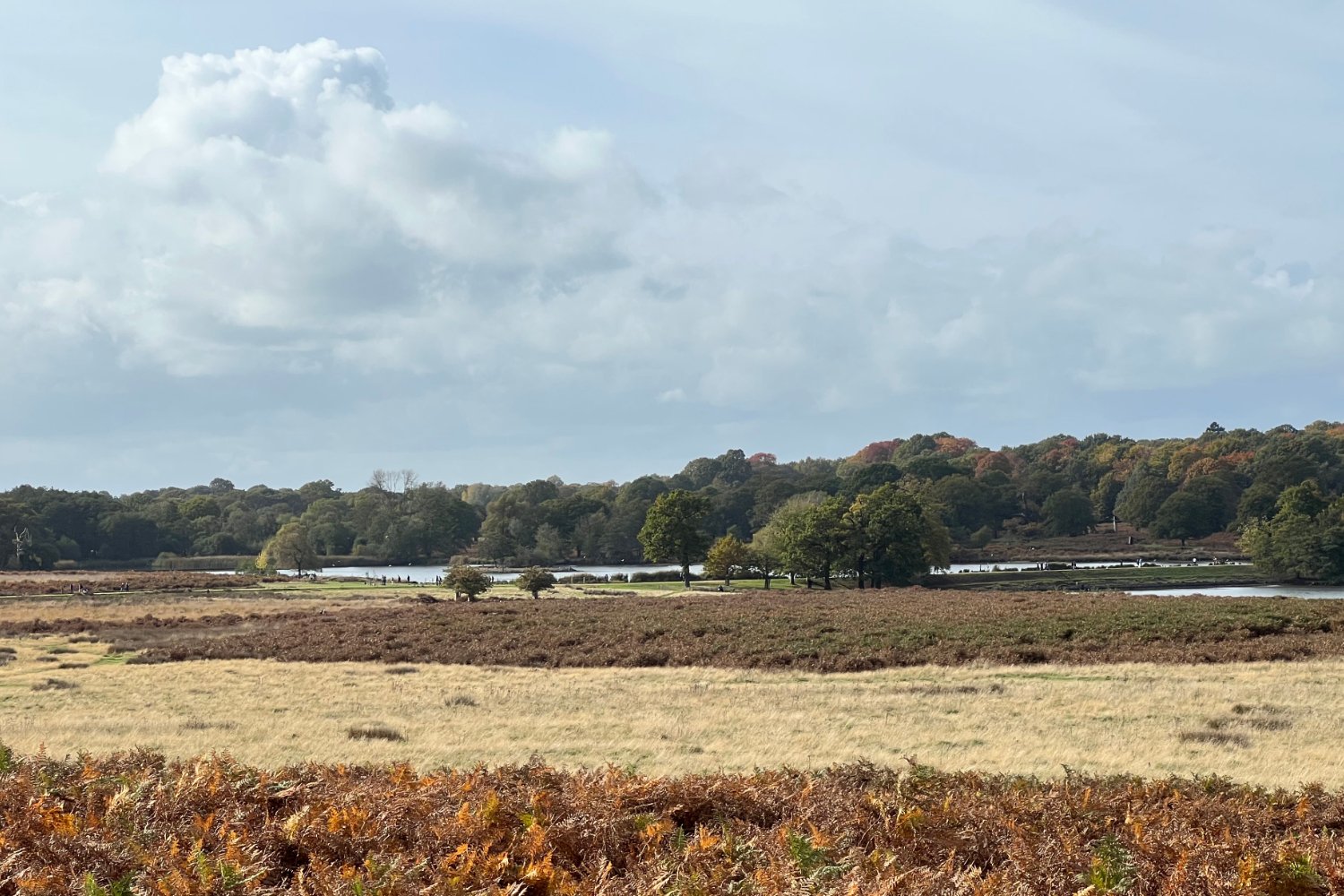
Ride practicalities
START/FINISH: Mortlake train station DISTANCE: 27km. TOTAL ASCENT: 219m TERRAIN AND SURFACES: Mainly traffic-free cycle paths across the commons and deer park. There is a short road section, linking Sheen Gate in Richmond Park to Mortlake train station. FOOD: The Windmill cafe on Wimbledon Common, Pembroke Lodge, Richmond Park. MAINLINE TRAIN SERVICES: Regular SW trains linking Barnes/Mortlake with Waterloo.
LINKS TO OTHER RIDES: Greenwich to Hampton Court, Wandsworth to Richmond, The Royal Parks ride
Ride notes
The ride begins at Mortlake station where there are direct trains to and from Waterloo. From the station, it’s a short ride through quiet streets before arriving at Barnes Common, which we cross and arrive at Rocks Lane where there is a memorial to Marc Bolan, the guitarist who was ‘too beautiful to live and too young to die’. He was killed when his girlfriend crashed their mini into a tree two weeks before his 30th birthday in 1977. The memorial stone and bust of the singer/guitarist is always adorned with flowers.
The next stretch is up Putney Park Lane, a gravelled road going uphill towards the heath. It is a lovely traffic-free stretch passing a mix of trees, social and private housing. At the top of the climb you arrive at the self-styled ‘country pub’, The Telegraph. During the Napoleonic wars the building was an Admiralty telegraph station which relayed messages between Portsmouth and London. One such message relayed Nelson’s victory at the Battle of Trafalgar.
Marc Bolan's shrine
From the pub, there is a handy underpass beneath the busy A3 which takes you onto the gravel paths of Putney Heath, and then onto Wimbledon Common. The riding is glorious, if a little sniffy. The wardens of the Common are very hostile towards cycling and they have posted more notices about ‘no cycling’ than can be found in the whole city. However, the route you are on is perfectly legal to ride and it is gorgeous. Heathland filled with purple heather, birches and oaks. Dogs and golfers. Big skies. There is space, fresh air and flat, easy riding. After a kilometre or so you arrive at the best preserved windmill in London, where there is a tea room. The route continues on towards Cannizaro House where there is a splendid Italianate garden to visit. The name Cannizaro dates back to 1832 when Count St Antonio, occupant of what was then Warren House succeeded to the dukedom of Cannizzaro in Sicily. The house has retained his name, but lost a ‘z’ somewhere along the way.
Golfers on the Common have to wear red
Back on the trail, you are guided by ‘cycling is permitted’ signs on a track leading down hill. At this point, you might dismount and proceed ahead to the old Iron Age Fort, named ‘Caesar’s camp’. However half of it is out of bounds as it intrudes onto a golf course.
The route takes a turn to the right and dives down hill. It is very tempting to go flat out in an exhilarating blast, but beware - there are horses and walkers who appear suddenly out of the woods and cross the path unaware of speeding bicycles.
At the foot of the descent, you join the lovely Beverley Brook, whose name is derived from ‘Bever’s Ley’ meaning ‘the place of the Beavers’. However, there have been no beavers here since the 16th century and there are no plans to re-introduce them.
Broomfield hill, Richmond Park
Having crossed the A3 using the pedestrian lights, you you arrive into Richmond Park, where you join the Tamsin Trail around the perimeter of the deer park which was formed and enclosed by Charles I. This is possibly the best trail ride in the whole of London. The path is well maintained, there are small ups and downs, twists and turns. There are beautiful views across the park and over London, herds of wild deer and gnarly old oaks many of which are hundreds of years old.
After five kilometres, you arrive at Pembroke Lodge. This is a fabulous stop. It was once a simple cottage belonging to a mole-catcher but so enamoured was the Duchess of Pembroke with the house and view, that she begged King George III to give it to her. Today the cafe serves good meals, as well as excellent coffee and cake. The gardens are a wonderful place to wander and you should not miss the view from the top of Henry’s Mound across to St. Paul’s Cathedral a full 10 miles away. Beyond the Mound is Poet’s Corner, where there’s a bench dedicated to the singer/songwriter Ian Dury, who wrote a song entitled, ‘Reasons to be cheerful’. On a bright autumn day with fine views across the Thames valley, it is hard not to be cheerful.
The view over Petersham and Kingston from Henry's Mound
Refreshed, you should re-mount and continue along the Tamsin trail. It is superlative riding on a sinuous path through old oak trees, with sightings of deer, views over London, and wide open grasslands to please you. After a full circumnavigation of the Park, the route heads into the interior, where in summer the air above you is filled with the song of skylarks. Just off the route (accessed by a short walk) is the Isabella Plantation which in spring, has one of the best Azalea displays in the whole of England. The route continues across the park on a tarmac access road (closed to normal traffic) passing the gracious Palladian building, White Lodge, home to the Royal Ballet School.
On exiting the park, you have a final kilometre on a quiet (ish) road through housing before arriving at Mortlake station
Every route on this website has been carefully researched as well as ridden. However situations on the ground can change quickly. If you know of changes to this route, or cafes, pubs and the like which you think other cyclists need to know about, feel free to share your thoughts below.
If you enjoyed this guide, why not subscribe to the website so as not to miss other inspirational routes?
wheremywheelsgo.uk is a Feedspot UK Cycling top website




